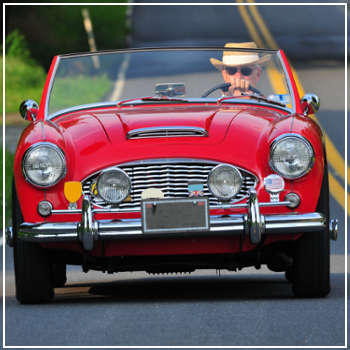What’s the Difference Between Classic, Vintage & Antique Cars?
 For car enthusiasts, restoring an older vehicle can be one of the most rewarding hobbies. Whether it's a classic, antique, or vintage model, each category has its own set of criteria and charm. Understanding the differences between these classifications is key to making informed decisions when it comes to restoration, insurance, and registration.
For car enthusiasts, restoring an older vehicle can be one of the most rewarding hobbies. Whether it's a classic, antique, or vintage model, each category has its own set of criteria and charm. Understanding the differences between these classifications is key to making informed decisions when it comes to restoration, insurance, and registration.
The General Guidelines
While there’s no universal standard for defining these categories, there are general guidelines that many organizations and states follow:
- Classic: Typically considered a vehicle that is at least 20 years old.
- Antique: Usually refers to cars that are 45 years or older.
- Vintage: Often defined as vehicles built between 1919 and 1930.
These definitions can vary depending on the state, the insurance provider, and the specific organization you're working with. The condition of the car, the parts used in restoration, and whether it's been modified all play a role in how it's classified.
State DMV Regulations
Many states have their own rules regarding historical or antique vehicles. For example, if a car was made after 1922 and is at least 25 years old, it may automatically qualify as a historical vehicle. Cars made before 1965 with engines of 16 cylinders or more might be called "Horseless Carriages." These classifications usually require the car to remain as original as possible, with no modifications or replicas allowed.
Cars over 45 years old are often labeled as "antique" and may need special license plates. These vehicles must also maintain their original design, including original parts, to retain their status. Always check your local DMV regulations before purchasing or restoring an older car.
Insurance Considerations
Auto insurance companies typically define antique or classic cars as those from 1900 to 1979. If the car was made in 1980 or later but isn't considered modern, it might fall under "collector car" coverage. These policies differ from standard auto insurance and may include restrictions such as:
- Limited driving locations
It’s important to get a policy tailored for classic, antique, or vintage vehicles to ensure proper coverage and avoid any surprises down the road.
Organizations and Standards
Some organizations have even stricter standards than the general public. For instance, the Classic Car Club of America requires vehicles to meet high standards in design, engineering, and craftsmanship. Their definition includes cars made between 1915 and 1948 that are fully restored and free of modern modifications like power brakes.
The Antique Car Club of America also sets similar standards but allows for a broader range of age, considering anything 25 years or older as antique.
What Makes a Car Vintage?
Vintage cars often overlap with antique classifications but are generally more flexible. They were typically built between 1919 and 1930 and can include modified or altered versions of original designs. This category often includes custom cars, hot rods, and exotic models that don’t fit into the strict definitions of antique or classic.
If you're working on restoring an older vehicle and need expert help, DaSilva’s Auto Body is here to assist. Whether it's a classic, antique, or vintage project, we have the experience and skills to bring your dream car back to life. Call us today to learn more about how we can help with your next restoration project.
Environmental protection material production equip
Environmental protection equipment refers to mechanical products, structures, and systems manufactured and constructed by production units or construction and installation units for controlling environmental pollution and improving environmental quality.
Environment,equipment,material
ChangZhou FENGJU Machinery Equipment CO., LTD , https://www.fengjumachinery.com
